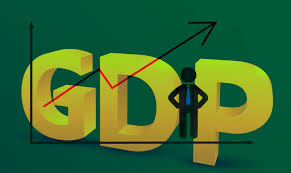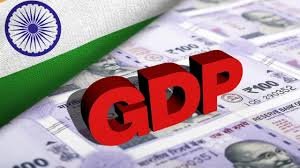India Revises GDP Base Year to 2022-23
India has revised its Gross Domestic Product (GDP) base year to 2022-23, a move aimed at improving the accuracy and reliability of national economic data. The decision was taken after the release of the 2022-23 GDP data by the National Statistical Office (NSO), replacing the earlier base year of 2011-12. This change is expected to better reflect the current structure of the economy, including new sectors such as digital services, and allow for more precise policy-making.
The new base year for GDP calculation is set to align with international standards, ensuring consistency in India’s economic data with global norms. The revision also brings India’s GDP calculations closer to the best practices followed by other economies. By updating the base year, the government aims to enhance the representation of emerging industries and provide policymakers with data that more accurately mirrors the present economic reality.
The revised data will provide more relevant insights into the economy’s growth rate and sectoral performance. It will also ensure a more accurate comparison with global economies, contributing to better international trade relations. The updated GDP series will also play a critical role in assessing the progress of government schemes and initiatives, including fiscal policies and social development programs.
Furthermore, the revised GDP series will enable better evaluation of long-term economic trends and challenges, allowing India to make more informed decisions in the face of global financial uncertainties. The move is seen as part of India’s ongoing efforts to modernize its statistical framework and keep pace with global advancements.

Why This News is Important
1. Accurate Representation of the Economy
The revision of the GDP base year ensures a more accurate representation of India’s current economic structure. With sectors like digital services and e-commerce gaining significant weight, the updated data will reflect these new trends better than before, providing a more comprehensive view of the economy.
2. Improved Policy Formulation
Accurate and up-to-date GDP data plays a crucial role in formulating effective government policies. The revised data will provide more reliable economic indicators, helping policymakers make informed decisions on fiscal strategies, social programs, and infrastructure projects.
3. Global Standardization
India’s decision to align its GDP base year with international standards is crucial for comparability with other economies. This move enhances the country’s credibility in the global economic arena and facilitates easier comparison of India’s economic performance with other nations.
4. Better Economic Planning
Updated data will aid in better long-term economic planning. The change will allow Indian authorities to assess economic trends more effectively, helping them anticipate challenges and opportunities in areas such as employment, growth, inflation, and trade.
5. Transparency and Trust in Data
The shift to a new base year is also part of India’s effort to improve transparency and trust in official economic data. As the economy continues to evolve, updating the base year ensures that the data used for decision-making remains relevant and reflective of the current economic landscape.
Historical Context: Background Information
India’s approach to GDP base year revision is not a new one. The last major revision in the base year occurred in 2011-12, which was an important step toward improving the accuracy and relevance of economic data. Prior to this, the base year used for calculating GDP was 2004-05, which became outdated as the economy experienced rapid changes due to globalization, technological advancements, and shifts in industry composition.
The decision to revise the base year has been part of India’s ongoing efforts to modernize its statistical framework. The National Statistical Office (NSO) undertakes the task of revising the GDP base year periodically to reflect the changing structure of the economy and improve data quality. The new base year of 2022-23 is expected to better represent emerging sectors, including IT, e-commerce, and digital services, which have become key drivers of economic growth.
In earlier revisions, the base year update has also been used to assess how sectors like agriculture, manufacturing, and services have evolved. These revisions help make India’s economic data more comparable with global standards, facilitating better integration with international markets and financial systems.
Key Takeaways from “India Revises GDP Base Year to 2022-23”
| Serial No. | Key Takeaway |
|---|---|
| 1 | India has revised its GDP base year to 2022-23, replacing the earlier base year of 2011-12. |
| 2 | The revision aims to provide more accurate data that reflects the current structure of the economy. |
| 3 | The new base year aligns India’s GDP calculations with international standards for global comparability. |
| 4 | The updated GDP series will enable better economic planning and policymaking for both short-term and long-term decisions. |
| 5 | This revision is part of India’s efforts to modernize its statistical framework and enhance transparency in economic data. |
Important FAQs for Students from this News
1. What is the significance of revising the GDP base year to 2022-23?
The revision of the GDP base year ensures more accurate data reflecting the current structure of India’s economy, including newer sectors like digital services and e-commerce. This revision will improve the precision of GDP calculations and allow for better economic planning and policy formulation.
2. Why was the previous base year of 2011-12 outdated?
The 2011-12 base year became outdated as the Indian economy evolved with the rise of new sectors such as IT, digital services, and e-commerce. The base year revision helps update the data to align with the changing economic landscape.
3. How does the revision align India’s GDP calculations with international standards?
India’s decision to revise the GDP base year to 2022-23 brings its GDP calculations in line with global norms. This allows for better comparability between India’s economy and those of other countries, making international trade relations and policy-making more effective.
4. What role does the revised GDP data play in policy-making?
Revised GDP data offers policymakers more accurate and current insights into economic growth, sectoral performance, and national trends. This aids in making informed decisions regarding fiscal policies, infrastructure development, and social welfare programs.
5. How often does India revise its GDP base year?
India revises its GDP base year periodically, usually every 5-10 years, to reflect the structural changes in the economy and keep its economic data up-to-date. The last major revision occurred in 2011-12, and the current revision uses 2022-23 as the new base year.
Some Important Current Affairs Links


















 Exciting News!
Exciting News!  Join Our Telegram Channel Now!
Join Our Telegram Channel Now!
 Join our Telegram channel for a thrilling adventure into the world of daily current affairs.
Join our Telegram channel for a thrilling adventure into the world of daily current affairs. 
 Don’t miss out on the latest updates and insights! Click to join now and be part of the knowledge revolution!
Don’t miss out on the latest updates and insights! Click to join now and be part of the knowledge revolution! 
